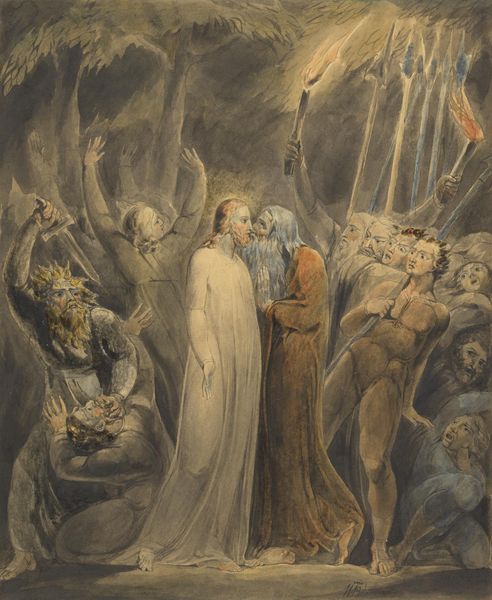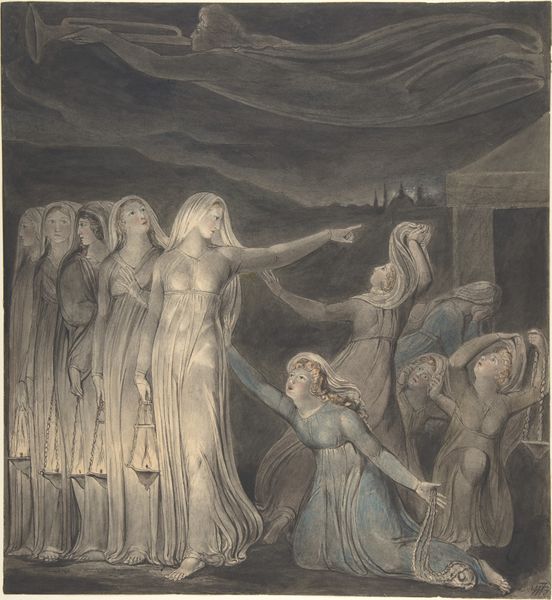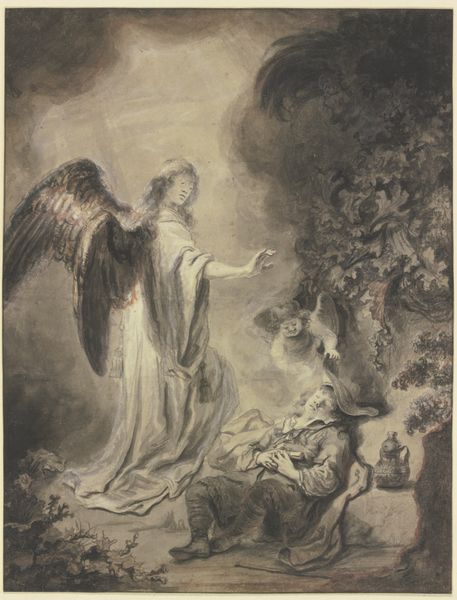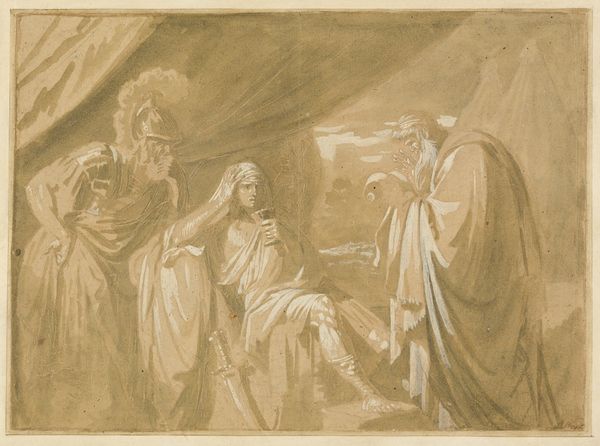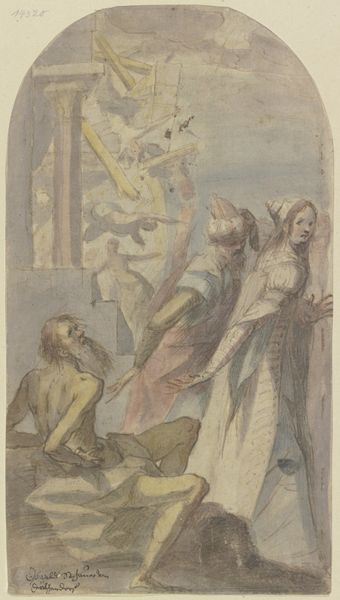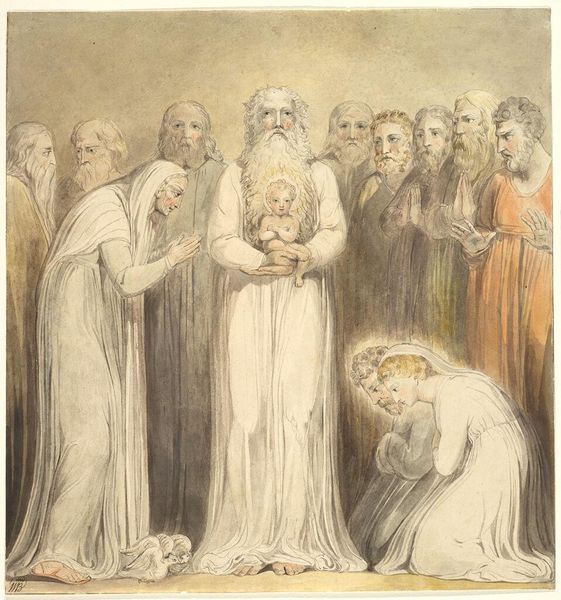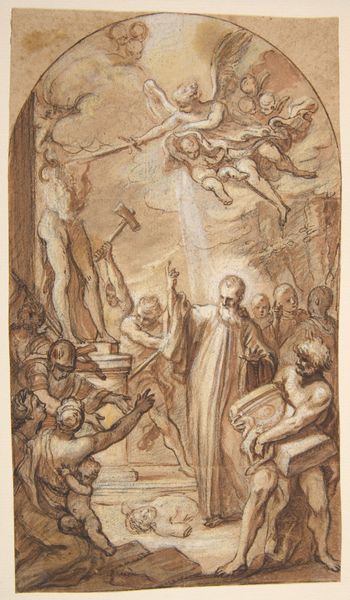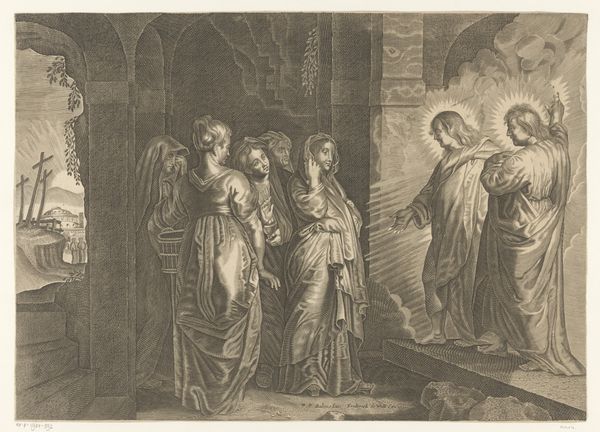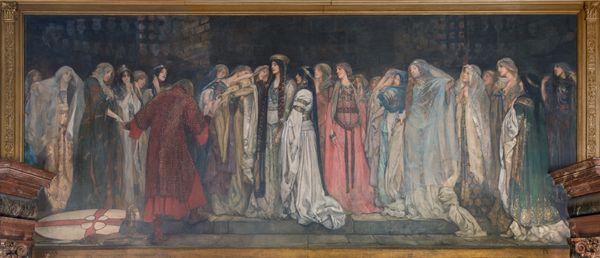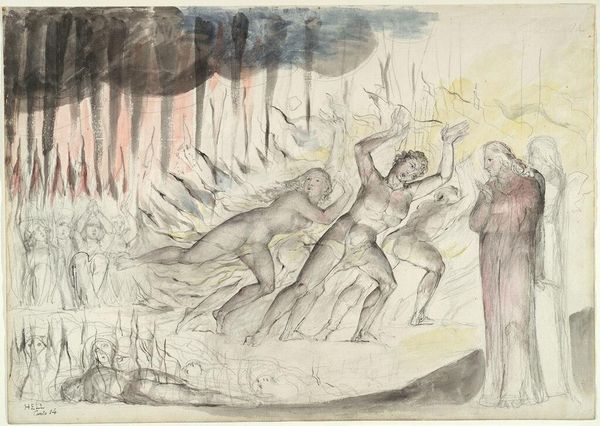
painting, watercolor
#
painting
#
figuration
#
oil painting
#
watercolor
#
romanticism
#
watercolour illustration
#
history-painting
#
watercolor
#
angel
Dimensions: 10 1/2 x 15 in. (26.7 x 38.1 cm)
Copyright: Public Domain
Editor: This is William Blake's "The Angel Appearing to Zacharias," painted around 1799 or 1800. It's watercolor and possibly oil on… paper, I think? It's quite small, isn't it? And the colors are so muted, almost dreamlike. What do you see in this piece, beyond the obvious biblical narrative? Curator: Oh, but the obvious IS the door, isn’t it? Blake wasn't just illustrating a story; he was diving into the visionary experience itself. Notice how the angel practically glows, an unearthly emanation, while Zacharias seems more… terrestrial, almost bewildered? Blake always had a way of making the spiritual intensely physical, and the physical strangely ethereal. Look at the flame—that's not just fire; it's transformative energy! Do you get the sense of a world being turned upside down? Editor: I do! Especially the way the angel's pointing upwards, like something HUGE is about to happen. Is it me, or does Blake kind of break perspective rules here? Curator: Rules? Blake ate rules for breakfast! He was all about conveying emotional and spiritual truth, not photographic reality. Perspective becomes a tool to heighten the sense of awe, to almost force us into Zacharias’s overwhelmed state. Think of it less as a literal depiction and more as a glimpse into the realm of prophetic revelation. He is like the Shakespeare of art! It also embodies the quintessential Romantic sensibility. Editor: That makes so much sense. So, it's not about *realism* but *realness*? Curator: Exactly! It’s about the burning, transformative potential held within a single moment of divine encounter. Blake invites us not just to witness, but to *participate* in the miracle. What about the figures on the altar on the right, did they spark anything? Editor: Gosh. Now that you mention it, no, I just glossed over those tiny shapes; but I understand what you're saying about the whole piece now: every little part has importance. Thanks! Curator: My pleasure! Let us find more art to discuss!
Comments
No comments
Be the first to comment and join the conversation on the ultimate creative platform.
